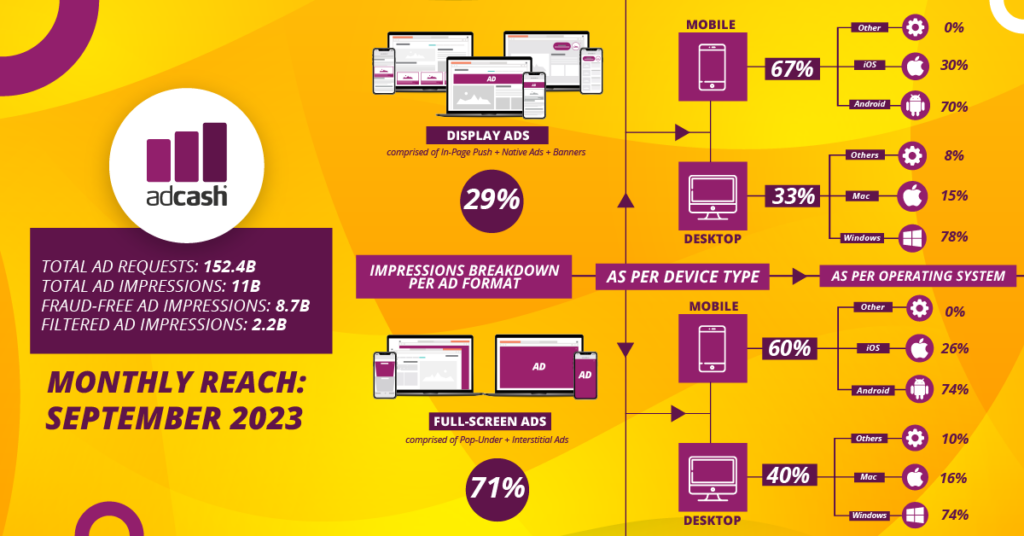The Unified Approach: Finding Balance
The question is not whether to invest in mobile or desktop campaigns but how to strike the right balance between the two. This is where the concept of a unified approach comes into play. Here are some tips to help you optimize your ad campaigns for both platforms:
Responsive Design: Ensure that your website, landing pages, and ad creatives are responsive and adapt well to various screen sizes and orientations. This ensures a consistent and user-friendly experience across devices.
Cross-Device Consistency: Maintain consistent branding, messaging, and design elements in your ad creatives across both mobile and desktop. This helps reinforce your brand and ensures that users have a cohesive experience.
Adaptive Ad Formats: Utilize ad formats that work well on both mobile and desktop, such as in-page push ads, which emulate the appearance and behaviour of an in-app or in-platform notification.
Mobile-First Design: With the above in mind, when creating ad creatives it’s still important to start with a mobile-first design approach. Ensure that your ad elements, including text and images, are legible and engaging on smaller screens, and focus on implementing short, attention-grabbing content.
Cross-Device Marketing: Desktop advertising can complement mobile advertising in cross-device marketing campaigns. It allows you to reach users on multiple platforms and deliver a consistent brand message.
Targeting Options: Take advantage of targeting options specific to each platform. For example, utilize location-based targeting on mobile and take advantage of desktop user behavior data for precise targeting. Remember that local businesses may prioritize mobile advertising more, while global brands may allocate resources to both platforms.
The Adcash platform takes a lot of the legwork out of optimizing for these, allowing you more time to craft your campaigns from a creative perspective.
User Experience: Prioritize a seamless user experience. Ensure that your ads lead to mobile-friendly landing pages that load quickly and are easy to navigate.
Ad Scheduling: Adjust your ad scheduling based on device usage patterns. For instance, mobile users may be more active during commuting hours, while desktop users may be active during work hours.
A/B Testing: A/B test your ad campaigns often to identify what works best for mobile and desktop users. Test different ad creatives, headlines, CTAs, and landing page designs.
Monitor and Analyze: Use analytics and tracking tools to monitor the performance of your ad campaigns on both mobile and desktop. Pay attention to metrics like click-through rates, conversion rates, and ROI. The Adcash advertiser panel has a wealth of metrics that you can harness to kick your campaigns up to the next level.
Budget Allocation: Allocate your budget based on the performance of each platform. Invest more in the platform that delivers better results while considering the unique value each platform brings to your overall strategy. Feel like this is out of your wheelhouse, or that your time would be better spent elsewhere? Enter Daily Budget Optimization!
Compliance: Stay up-to-date with data protection regulations and ensure your ad campaigns comply with privacy laws. User trust is nothing short of critical.
By implementing these tips into your advertising strategies, you can create well-optimized ad campaigns for both mobile and desktop platforms, increasing your chances of reaching and engaging your target audience with the widest net possible. 🎣




Join the conversation
0 comments
Submit a comment
Your email address will not be published. Required fields are marked *